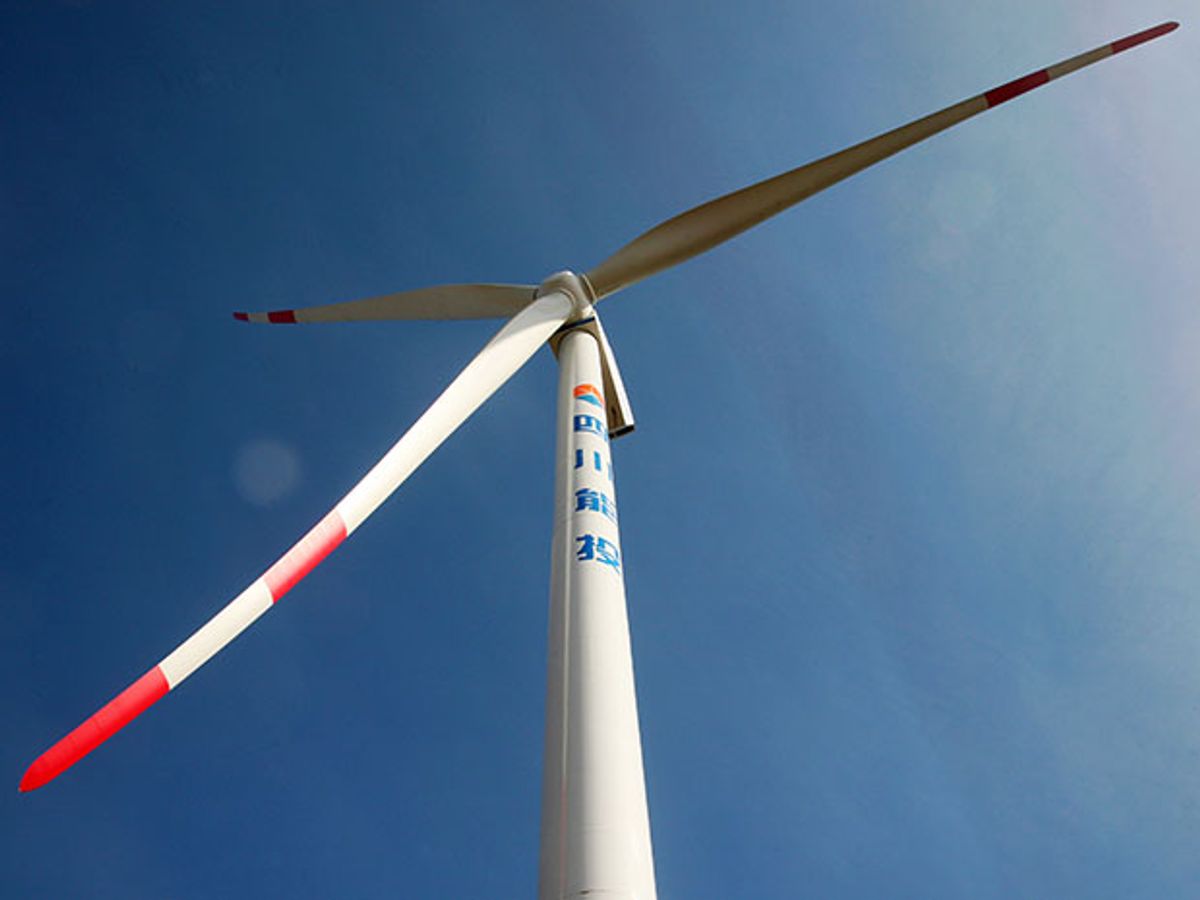China accounted for 36 percent of global investment in renewable energy last year, pouring $102.9 billion into non-hydro renewables such as wind and solar power. The country is a laggard, however, in maximizing return on renewable energy dollars, especially for wind power. China closed out 2015 with nearly twice the installed wind power capacity of the U.S., yet last year it generated less wind energy.
Harvard University and Tsinghua University researchers parse the causes of China’s wind energy gap in a report today in the journal Nature Energy. Using data from 2012, they conclude that delays in connecting new wind farms to the grid, low-quality equipment, and deliberate favoring of coal power over wind by grid operators are each about equally at fault.
But that conclusion is surprising on two counts. It downplays the role of China's relatively weaker winds—a factor often cited in earlier academic studies. And it suggests that deliberate curtailment of wind farm operations—which Chinese president Xi Jinping pledged to reduce in a climate deal struck with U.S. President Barack Obama last fall— is less of a factor than expected.

However, it may be an outdated picture, the authors acknowledge, owing to their reliance on 2012 data. Independent experts agree. “For 2012 [the findings] are reasonable, but curtailment is a much bigger issue now,” argues Ranping Song, a China energy expert with the Washington, D.C.-based World Resources Institute.
The team behind today's report, led by Michael McEvoy at Harvard and Xi Lu at Tsinghua, is well-versed in Chinese wind power. In 2009 pathbreaking modelling by the same team projected that wind power could meet 100 percent of China's future electricity needs at reasonable cost.
Here the Harvard-Tsinghua team is projecting backward, using statistical methods to understand why China’s wind farms delivered 39 terawatt-hours less energy in 2012 than their U.S. counterparts despite having 15 gigawatts greater generating capacity.
Only one-tenth of that shortfall can be attributed to the wind itself, according to their modelling of wind resources at Chinese wind farm sites.
Instead, they found that lower wind turbine quality, greater delays in connecting wind farms to the grid, and more frequent deliberate curtailment of wind farm output each reduced Chinese output by more than 19 terawatt-hours relative to its potential in 2012. 19 TWh is alot of energy – 50 percent more than what all of California's wind farms deliver today.
The relative impact of these factors may be quite different in 2016. Take turbine quality, for example. In 2008 IEEE Spectrum reported that China’s wind industry association was calling for a slowdown, worried that explosive wind farm construction was outpacing domestic manufacturers' ability to assure turbine quality.
But China's turbine technology has been "catching up quickly” and will match international standards “in short order” according to the Harvard-Tsinghua report.
Grid connection is also much improved since 2011, when China’s National Energy Administration, in Beijing, took control of all wind farm authorizations. “The grid connection issue has dramatically improved in the last few years,” says Song at WRI.
In contrast, government statistics show that curtailment—in which regional grid operators order wind farms to stay offline—has gotten worse. In 2015 Chinese grid operators curtailed 34 TWh of wind energy, wasting as much wind energy as was delivered by all of the UK's wind farms. Curtailment also cut China's solar output by 10 percent last year.
Some of China's curtailment is a symptom of inflexible power grids. In the wind-rich North in particular, coal-fired power plants supply district heating as well as electricity. So they must run during the winter clogging transmission lines and crowding out wind power.
However, experts such as Song say wind and solar power are more often curtailed because China has a glut of coal-fired power capacity, and grid operators are under pressure to give each plant a share of the market.
In recent month Chinese authorities announced policies to reduce such “institutional” curtailment. These include additional curbs on the construction of coal-fired power plants, enforcement of existing law to ensure priority grid access for renewable generation, and mandatory compensation for wind and solar operators when curtailment occurs.
Song says he is “reasonably optimistic" that the measures will help: “The government is on the right track. If they enforce what they’re trying to do right now they can reduce a large chunk of the curtailment."
Peter Fairley has been tracking energy technologies and their environmental implications globally for over two decades, charting engineering and policy innovations that could slash dependence on fossil fuels and the political forces fighting them. He has been a Contributing Editor with IEEE Spectrum since 2003.



